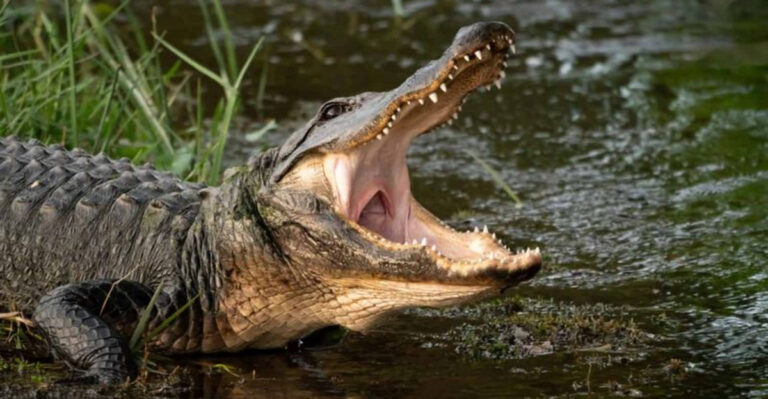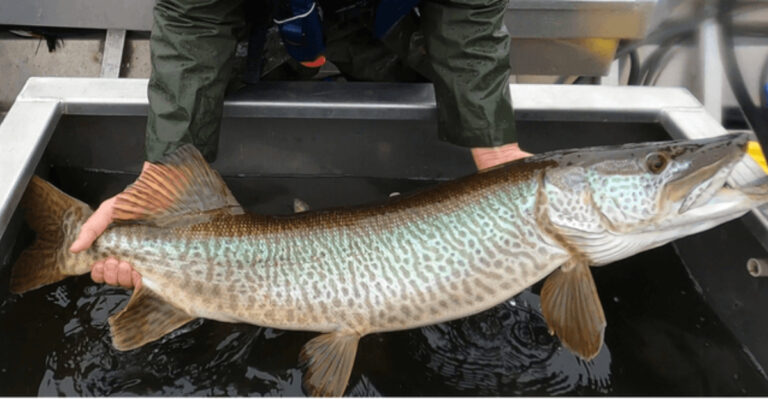Red-Eared Slider Tanks: A Guide To Enclosures
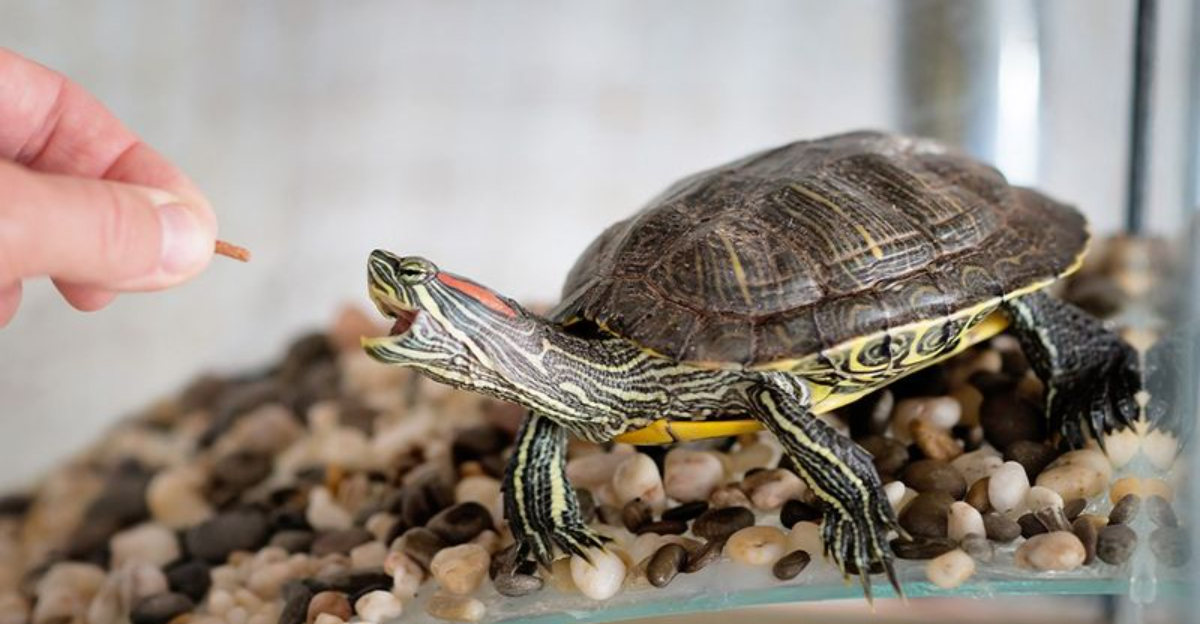
Ever wondered why those cute little red-eared sliders at the pet store need such specific homes? These semi-aquatic turtles require carefully designed enclosures that mimic their natural habitat.
Setting up the perfect tank isn’t just about their happiness—it’s essential for their health and longevity, potentially helping them live 20-30 years in captivity.
1. Choose The Right Tank Size
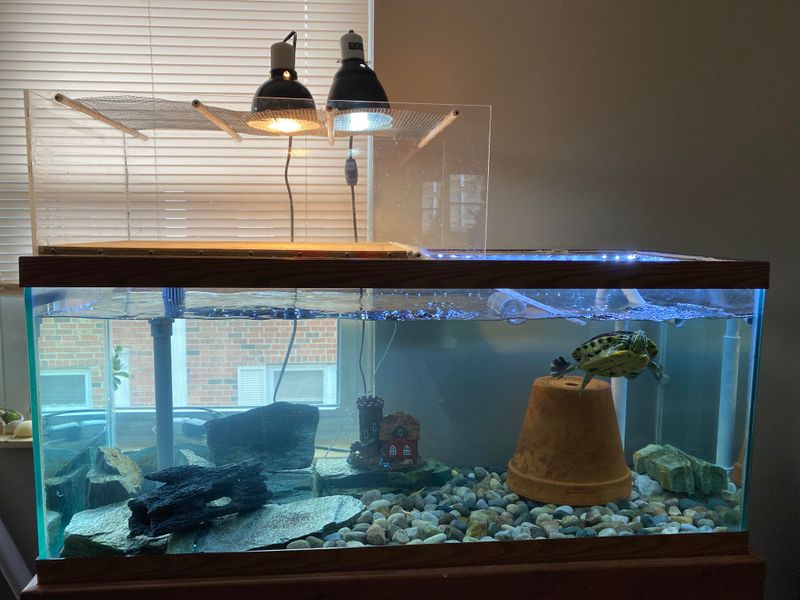
Forget those tiny starter tanks! Your slider needs at least 10 gallons of water per inch of shell length. A baby might start in a 20-gallon tank, but adults often require 75-125 gallons.
Think long-term when purchasing, as these turtles grow throughout their lives. Female sliders typically reach 10-12 inches, while males stay smaller at 7-9 inches.
2. Set Up Proper Filtration
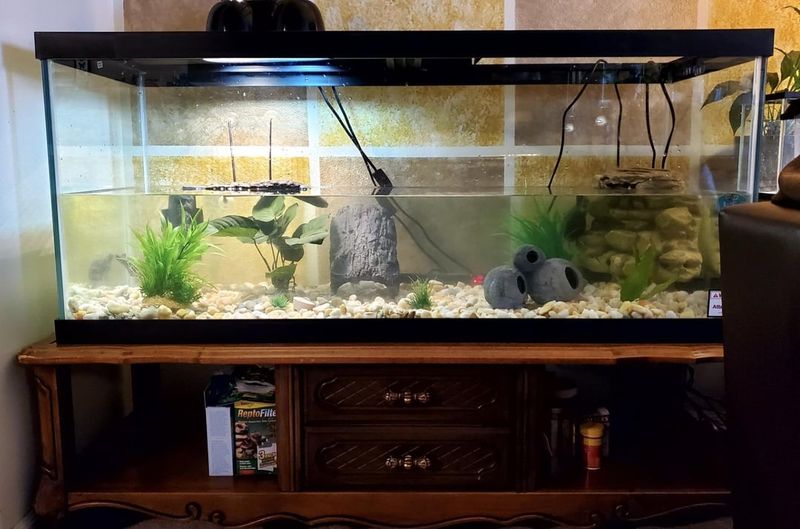
Turtles are messy creatures, producing way more waste than fish! A filter rated for at least twice your tank’s capacity is essential. Canister filters work wonderfully for larger setups.
Regular maintenance prevents ammonia buildup that can cause respiratory infections. Clean your filter monthly, but never wash filter media in tap water—use tank water to preserve beneficial bacteria.
3. Create A Basking Area
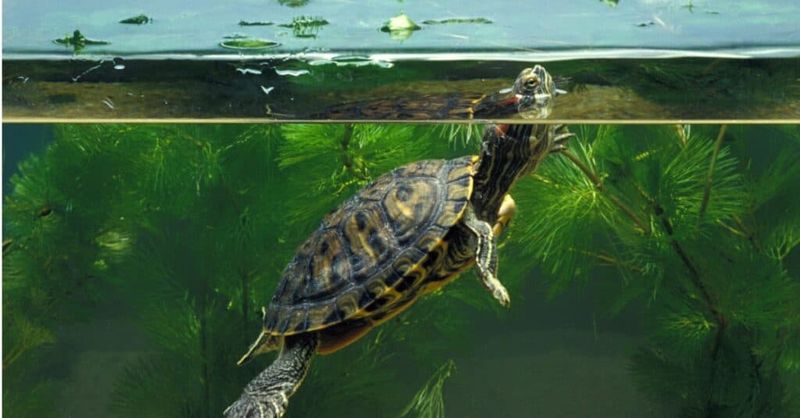
Every slider needs a completely dry spot to climb out and bask. Commercial turtle docks work well, but DIY platforms using egg crate material and slate tiles offer more space.
Position the basking area at one end of the tank, creating a temperature gradient. The platform should be sturdy enough to support your turtle’s weight and allow easy access from the water.
4. Install Proper Lighting
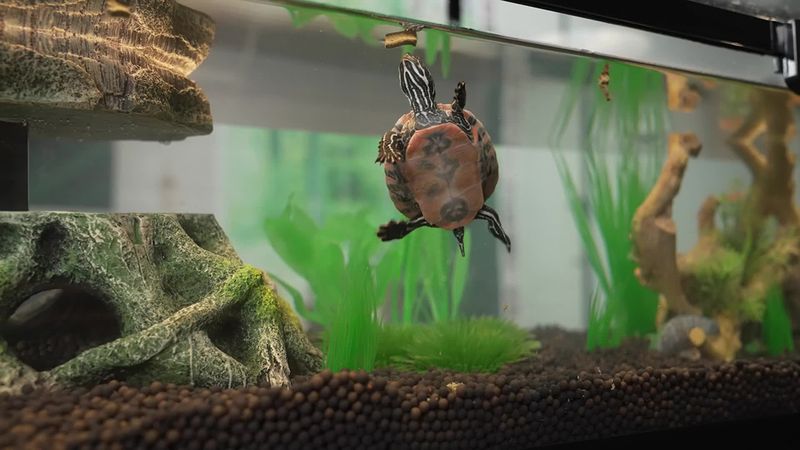
UVB lighting isn’t optional—it’s absolutely crucial! Without it, sliders can’t metabolize calcium properly, leading to metabolic bone disease. Position a UVB bulb 10-12 inches above the basking area.
Replace UVB bulbs every 6-12 months, even if they still emit visible light. The invisible UVB rays diminish over time. A separate heat lamp creates the necessary basking temperature of 90-95°F.
5. Maintain Water Temperature
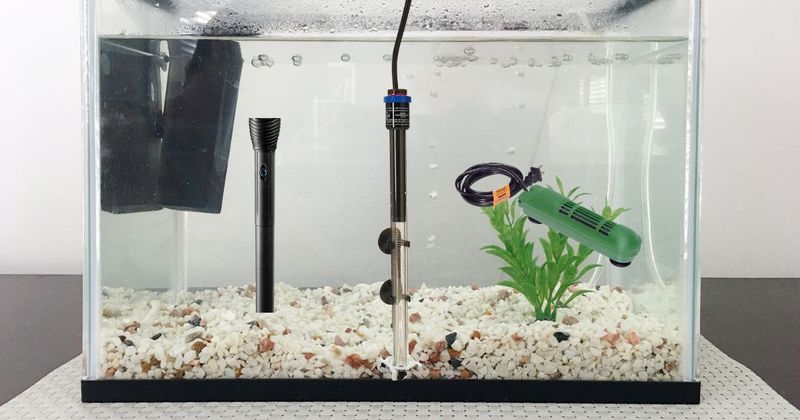
Room temperature water isn’t warm enough for these tropical reptiles! Keep water between 75-80°F using a submersible aquarium heater with a guard to prevent burns.
Place a thermometer at the opposite end from the basking area to monitor the coolest water temperature. Fluctuations can stress your turtle and compromise their immune system, so invest in a quality heater with reliable temperature control.
6. Establish Water Depth Guidelines
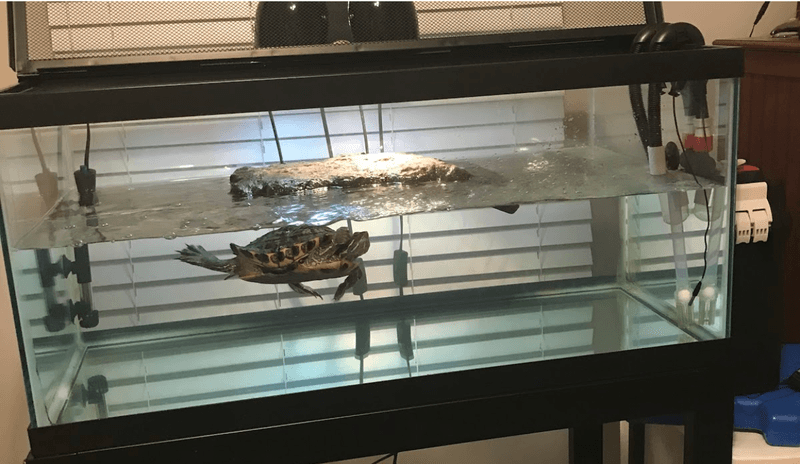
Water depth should be at least 1.5 times your turtle’s shell height, allowing them to flip themselves if they end up upside down. Young sliders need shallower water than adults.
Too deep, and they’ll tire from swimming; too shallow, and they can’t exercise properly. A good rule of thumb: adults thrive in 12-18 inches of water, giving them plenty of swimming space.
7. Add Safe Substrate Options

Bare-bottom tanks are easiest to clean, but natural-looking substrate adds enrichment. Large smooth river rocks (bigger than your turtle’s head) prevent accidental ingestion.
Avoid sand, gravel, or small pebbles that can cause intestinal blockages if swallowed. If aesthetics matter, consider large flat slate pieces arranged to create hiding spots while remaining easy to clean during water changes.
8. Arrange Enrichment Features
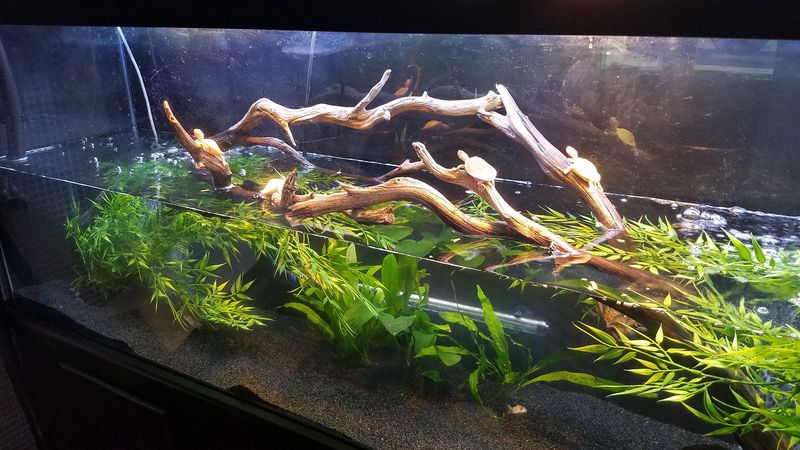
Mental stimulation prevents boredom and stress behaviors. Floating logs, aquatic plants (real or silk), and underwater caves create an engaging environment. Rotate toys monthly to maintain interest.
Avoid items with small parts that could break off and be ingested. PVC pipes make excellent hiding spots—just ensure they’re large enough for your turtle to enter and exit easily without getting stuck.
9. Install Water Circulation System
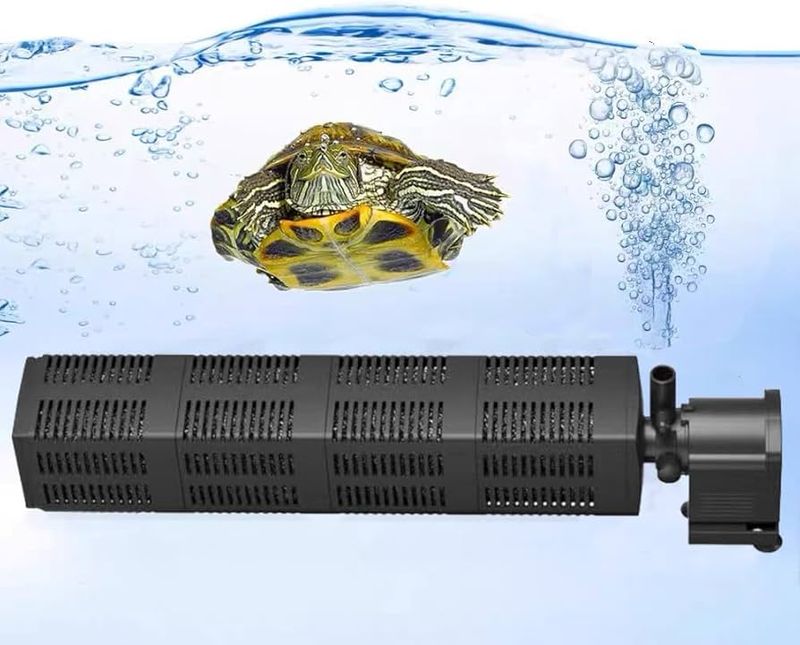
Beyond filtration, water movement keeps your tank healthier. A small submersible pump or air stone creates beneficial circulation, preventing stagnant areas where bacteria thrive.
The gentle current also provides exercise as turtles swim against it. Just ensure the flow isn’t too strong—your slider should be able to swim comfortably without struggling. Position outlets away from the basking area to maintain a calm zone.
10. Implement A Feeding Station

Feeding turtles in a separate container prevents water fouling and filter clogging. A simple plastic tub with a few inches of water works perfectly for mealtime.
This practice dramatically reduces tank maintenance and improves water quality. As a bonus, it conditions your slider to associate the feeding container with food, making handling easier. After meals, return your turtle to their main enclosure.
11. Establish A Cleaning Schedule
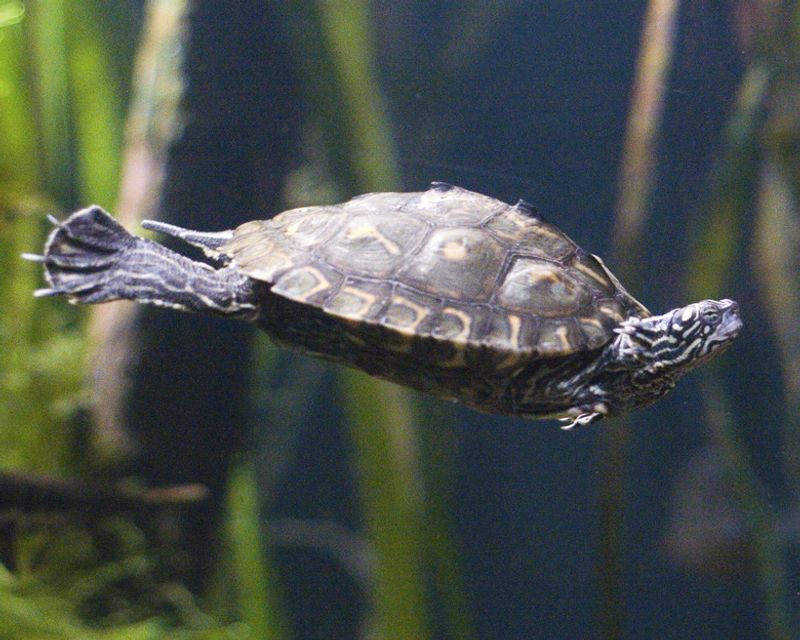
Weekly partial water changes (25-30%) keep ammonia levels in check. Monthly deep cleanings include filter maintenance and substrate vacuuming. Use a water testing kit to monitor water parameters.
Never use soap or household cleaners on tank components—they’re toxic to reptiles. Instead, use aquarium-safe cleaners or white vinegar (thoroughly rinsed). Regular maintenance prevents the dreaded “turtle tank smell” that develops in neglected setups.
12. Consider Tank Placement Carefully
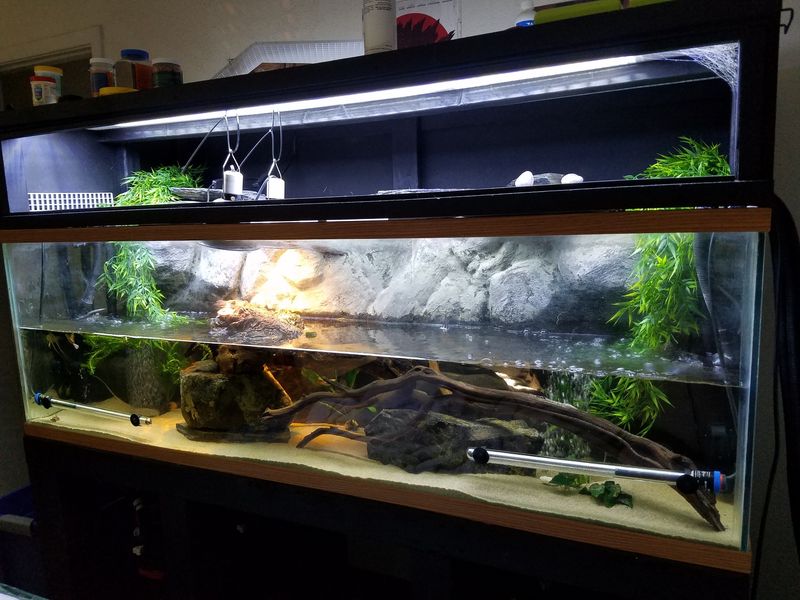
Location matters more than you might think! Place the tank away from windows to prevent algae blooms and dangerous temperature fluctuations. Avoid high-traffic areas that might stress your turtle.
The enclosure needs a stable surface that can support its considerable weight—a filled 75-gallon tank exceeds 700 pounds! Ensure nearby electrical outlets accommodate all necessary equipment while keeping cords safely managed.
13. Secure A Proper Tank Cover

Sliders are surprisingly good climbers and jumpers! A secure screen top prevents escapes and keeps curious pets or children from accessing the water. It also reduces evaporation and water splashing.
The cover should allow UVB penetration—avoid glass or plastic that blocks these rays. Create cutouts for equipment while ensuring no gaps exist where your turtle might get stuck or escape through.
14. Monitor Humidity Levels
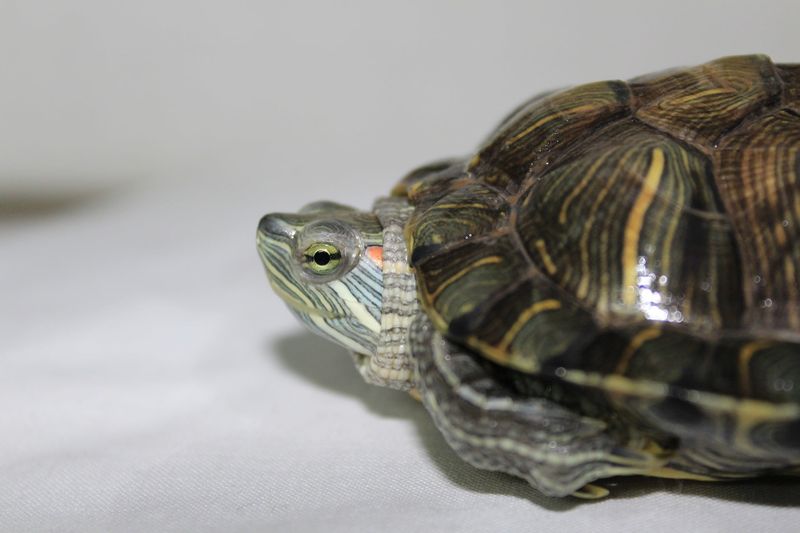
While aquatic, sliders need proper humidity for respiratory health and shell condition. The water provides most humidity, but monitor levels in the basking area—aim for 40-60% using a hygrometer.
Too dry conditions can cause respiratory infections or shell pyramiding. If your home is exceptionally dry, occasional misting of the basking area helps maintain healthy humidity without making the platform too wet for proper drying.
15. Plan For Growth And Upgrades
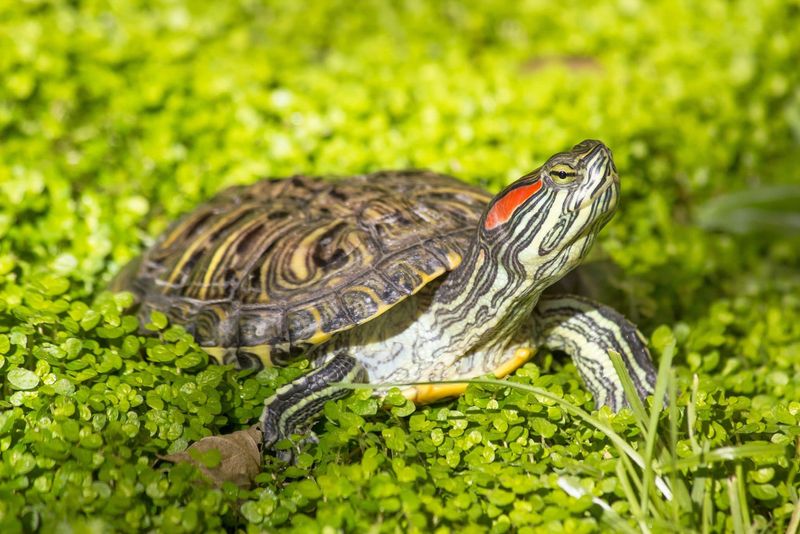
That cute quarter-sized baby will grow rapidly! Design your setup with future needs in mind. Modular components allow for easier upgrades as your slider grows.
Consider starting with a larger tank than immediately needed if budget allows. Otherwise, begin saving for the eventual upgrade. A well-planned enclosure adapts to your turtle’s changing requirements throughout their decades-long lifespan.

